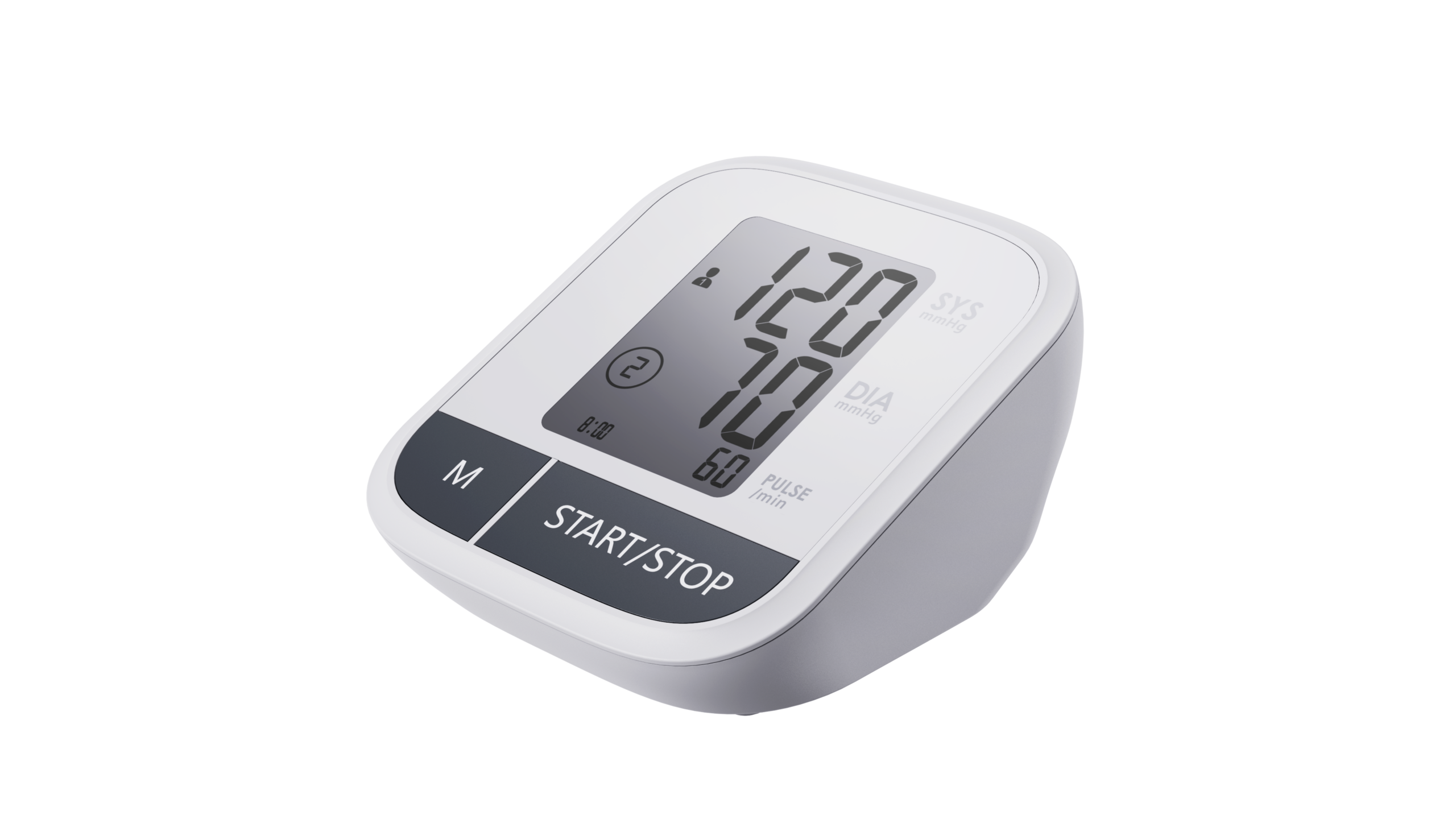Medical-grade blood pressure monitor are devices that are designed and manufactured to meet strict accuracy and reliability standards for use in medical settings. These meters are typically used by healthcare professionals in hospitals, clinics, and other healthcare facilities to measure blood pressure accurately and monitor patients’ cardiovascular health.
Features:
Medical-grade arm blood pressure meters TMB-1775 often have features and capabilities that ensure precise measurements and ease of use. Some common features found in medical-grade meters may include:
- Accuracy: Medical-grade meters are calibrated to provide highly accurate blood pressure measurements, often meeting international standards set by organizations such as the Association for the Advancement of Medical Instrumentation (AAMI).
- Validation: These meters may undergo validation studies to ensure their accuracy and reliability compared to reference standards.
- Cuff sizes: They often come with a range of cuff sizes to accommodate different arm circumferences, allowing for accurate readings for a wide range of patients.
- Memory and data management: Medical-grade meters may have built-in memory or data management capabilities to store and manage patient measurements over time.
- Multiple measurement parameters: Some models may also measure additional parameters such as pulse rate, mean arterial pressure (MAP), and irregular heartbeat detection.
- Professional-grade construction: Medical-grade meters are typically designed to withstand frequent use and have a robust build quality for durability in clinical environments.
It’s important to note that specific models and brands of medical-grade blood pressure meters may vary in their features and capabilities. If you’re looking for a medical-grade blood pressure meter, it is recommended to consult with healthcare professionals or medical equipment suppliers who can provide guidance on selecting the most appropriate device for your needs.
Basic Importance:
- Medical-grade blood pressure meters are designed to provide highly accurate and reliable measurements. Accurate blood pressure readings are crucial for diagnosing and managing various medical conditions, such as hypertension (high blood pressure), hypotension (low blood pressure), and cardiovascular diseases. Healthcare professionals rely on accurate measurements to make informed decisions regarding patient care.
- Reliable blood pressure measurements help healthcare providers identify potential health risks and monitor patients’ conditions effectively. Accurate blood pressure readings allow for appropriate medication adjustments, treatment decisions, and timely interventions, ensuring patient safety and well-being.
- Blood pressure is a vital sign that provides valuable information about a person’s cardiovascular health. Medical-grade blood pressure meters help healthcare professionals diagnose and monitor conditions such as hypertension, which is a major risk factor for heart disease, stroke, and other serious health issues. Regular monitoring of blood pressure levels is essential for assessing treatment effectiveness and making necessary adjustments.
- For patients with hypertension or other cardiovascular conditions, accurate blood pressure measurements guide the selection and adjustment of medications. Medical-grade blood pressure meters enable healthcare providers to monitor the effectiveness of treatment plans, ensuring that patients are receiving the appropriate medications and dosages to manage their conditions effectively.
- In research and clinical trial settings, medical-grade blood pressure meters are used to collect accurate data for studying the effectiveness of interventions, medications, and therapies related to cardiovascular health. Reliable measurements from these meters contribute to the generation of scientific knowledge and advancements in the field of cardiovascular medicine.
Usage Of Medical Pressure:
Using a medical-grade blood pressure meter, also known as a sphygmomanometer, requires proper technique and understanding of the process. Here’s a step-by-step guide on how to use it:
- Prepare the equipment: Ensure that you have a properly calibrated medical-grade blood pressure meter, which typically consists of an inflatable cuff, a pressure gauge, and a stethoscope or electronic sensor.
- Position yourself and the patient: Find a quiet and comfortable environment for the measurement. The patient should be seated in a chair with their back supported and feet flat on the floor. They should be relaxed and not have crossed legs or arms.
- Prepare the patient’s arm: Ask the patient to expose their upper arm, removing any clothing or accessories that might interfere with the measurement. The arm should be at heart level and supported, either on a table or your own arm.
- Choose the appropriate cuff size: Select a cuff that fits the patient’s arm circumference. The cuff should cover about 80% of the upper arm, and the bladder within the cuff should encircle at least 80% of the arm.
- Apply the cuff: Wrap the deflated cuff snugly around the upper arm, with the bottom edge about an inch above the bend of the elbow. Make sure it is positioned correctly, centered over the brachial artery on the inner side of the arm.
- Position the stethoscope or sensor: If you are using a traditional stethoscope, place the earpieces in your ears and the chest piece over the brachial artery, securing it in place with light pressure. If you have an electronic sensor, follow the manufacturer’s instructions for proper placement.
- Inflate the cuff: Begin by inflating the cuff rapidly by squeezing the bulb or pressing the appropriate button on an automated device. Inflate the cuff until the pressure is approximately 30 mmHg above the patient’s expected systolic pressure.
- Deflate the cuff: Gradually release the pressure in the cuff, either by slowly releasing the valve or following the instructions on an automated device. As the pressure decreases, listen through the stethoscope or observe the digital display for the first tapping sound or reading. This is the systolic pressure.
- Continue deflating the cuff: Keep deflating the cuff slowly while monitoring the pressure or listening for the sounds. As the pressure drops, the sounds will become more distinct, and then they will disappear. Note the point where the sounds completely stop—this is the diastolic pressure.
- Record the blood pressure: Once you have obtained the systolic and diastolic pressures, record them, along with the date, time, and any relevant notes, in the patient’s medical records or on a separate log sheet.
- Repeat if necessary: If the initial measurement seems unusual or if accuracy is in doubt, wait a few minutes and repeat the process to ensure accuracy.
Remember that proper training and practice are essential for accurate blood pressure measurements. If you are unsure or inexperienced, it’s advisable to consult a healthcare professional cipf-es.org or receive training on how to use a medical-grade blood pressure meter correctly.






